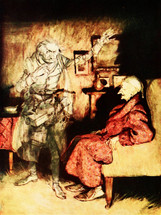Posted by Steve Jackson on Feb 2nd 2024
The Eighth Amendment (Or, “Are there no prisons?... Are there no workhouses?” - Ebenezer Scrooge in A Christmas Carol)
“Excessive bail shall not be required, nor excessive fines imposed, nor cruel and unusual punishments inflicted.”
Summary
The three clauses of the Eight Amendment are “Excessive bail”, “’Excessive fine”, and “Cruel and unusual punishment”.
In the beginning of the interpretation of this amendment the Supreme Court basically said that the term “Excessive” will evolve as case law takes shape in our new republic. But the third clause fell into the lap of the Supreme Court to determine.
While the Eight Amendment was seen as applying only to federal criminal cases the Fourteenth Amendment signed 77 years later in 1868 expanded this and allowed it to apply to civil cases within the states as well.
The bail clause was a holdover from the English Bill of Rights from 1689 which had roots in prior English law since the year 1275. From then until America’s Bill of Rights signing in 1791 both Excessive Bail and Excessive Fine were used and abused by the King and the English courts due to the same sense of ambiguity-which continues into modern American times.
Bail is offered for two reasons. Firstly, to ensure that the accused won’t flee when released and secondly, our system guarantees (as mush as possible) the presumption of innocence until proven guilty. An innocent person does not deserve imprisonment prior to a determination of jury trial or a judge’s decision. In essence the imposition of bail is a compromise between getting tossed in prison or be allowed to roam free until the court date.
But the offer of bail does not apply in all instances. In cases involving deportation bail is not a choice and must be imposed.
Regarding levying “Excessive fines” it took until 1998 for the Supreme Court to “inject some vitality” into this ambiguous power by requiring the study of three considerations: The facts of the case, the character of the accused and the harm caused by the infraction in order to determine the amount of the fine. Still ambiguous but better than before.
And that brings us to the big interpretation of “Cruel and unusual punishment”. It deals only with criminal punishment, not lesser crimes such as a truant child in school. And it limits the severity and the proportionality of the punishment to fit the crime.
What about the death penalty? Again, the judge or jury needs to consider the facts, the character and the harm caused by the offense. Those parameters vary from state to state.
But please know that thumb screws or torture chairs are not allowed…anymore. Whew!
Sources:
constitution.congress.gov
constitutioncenter.org
britannica.com
Corrections and comments are welcome. Please share to help us extend our readership.
###

